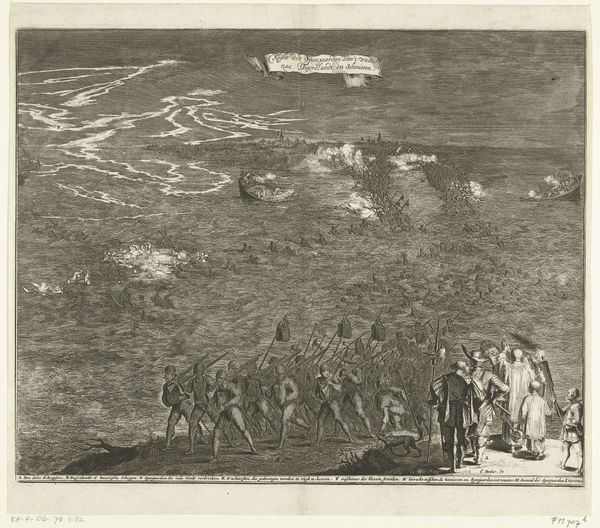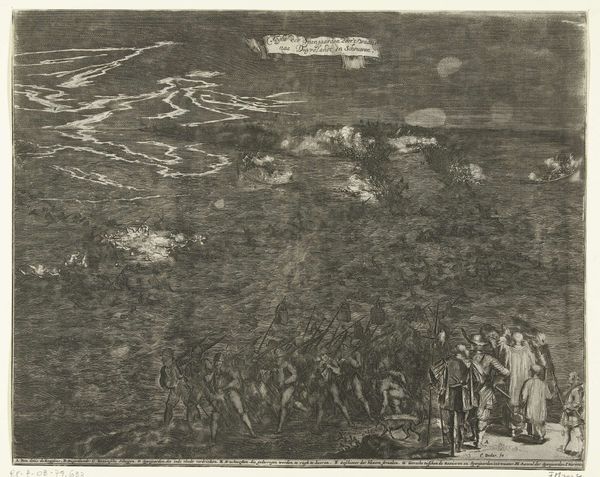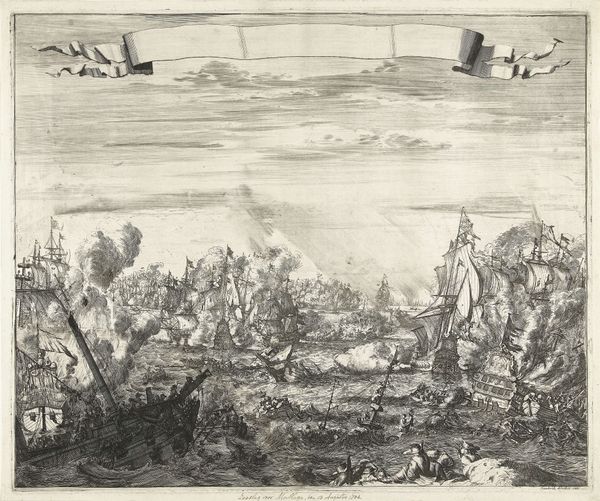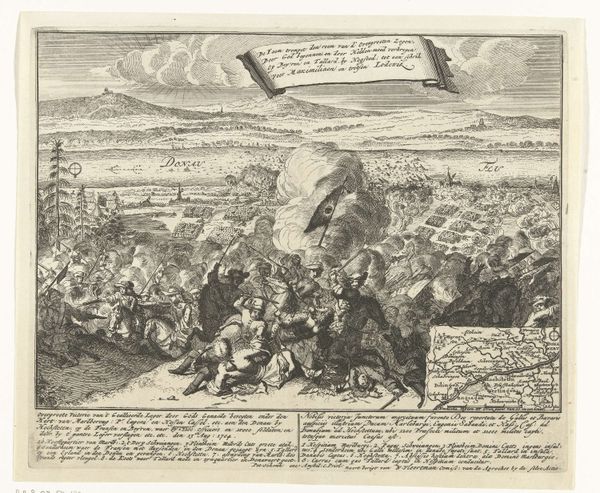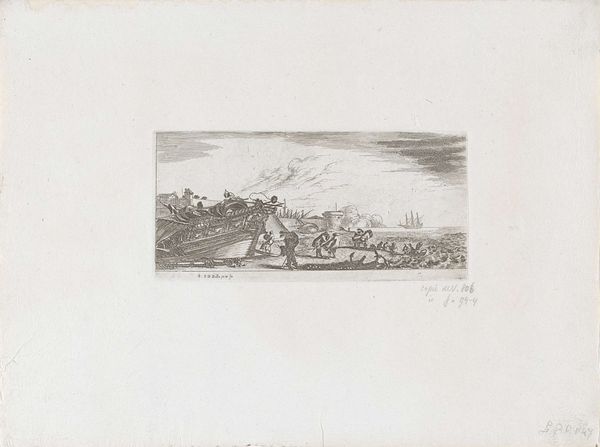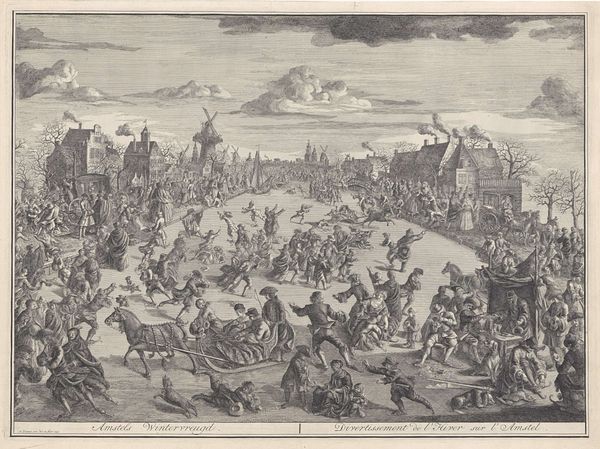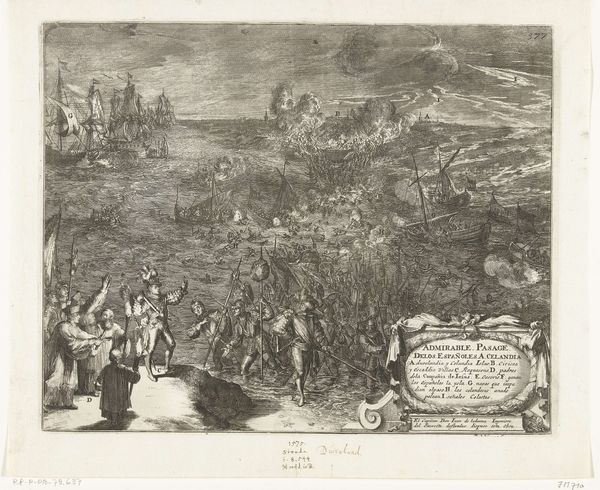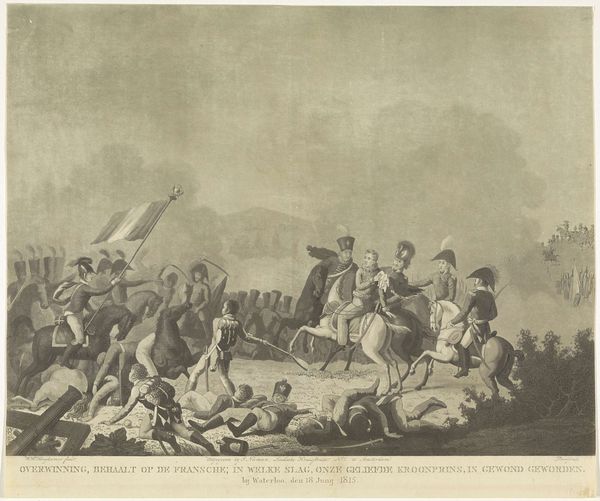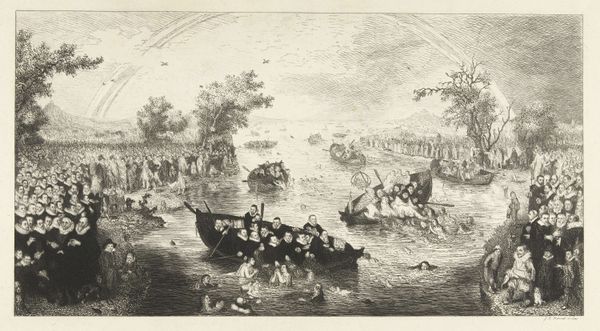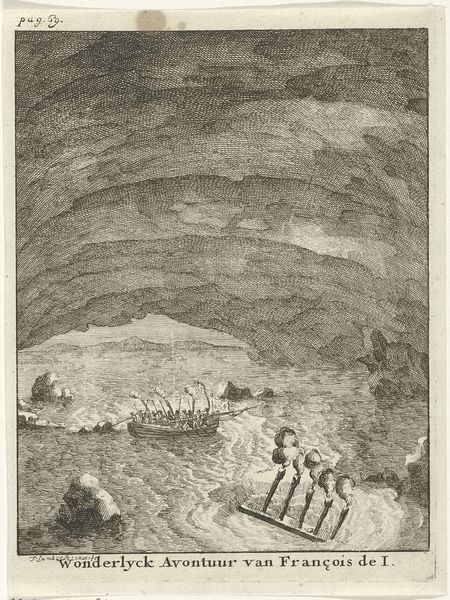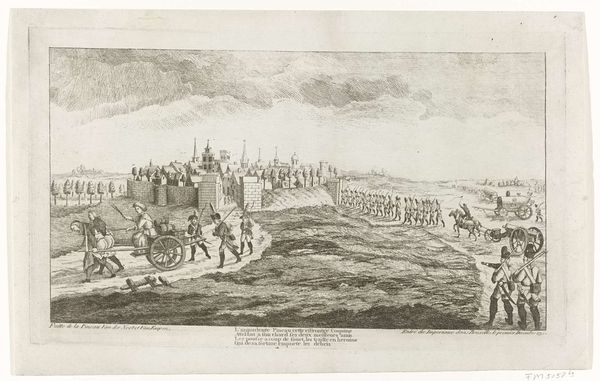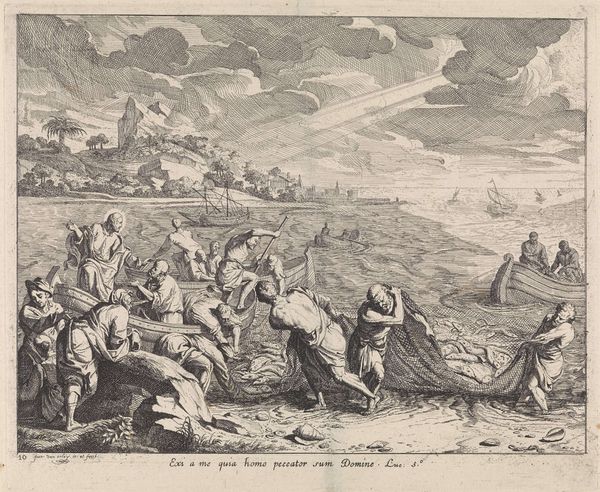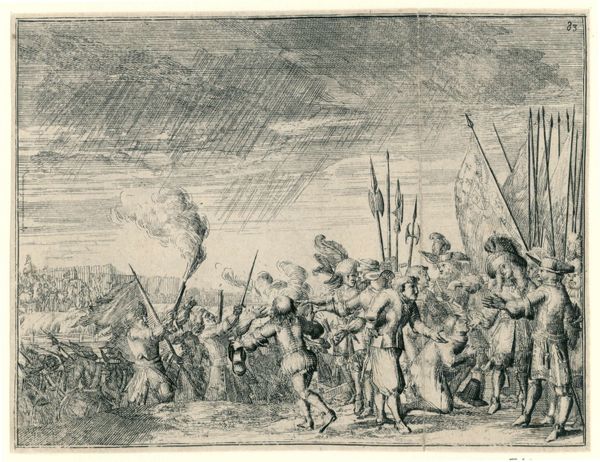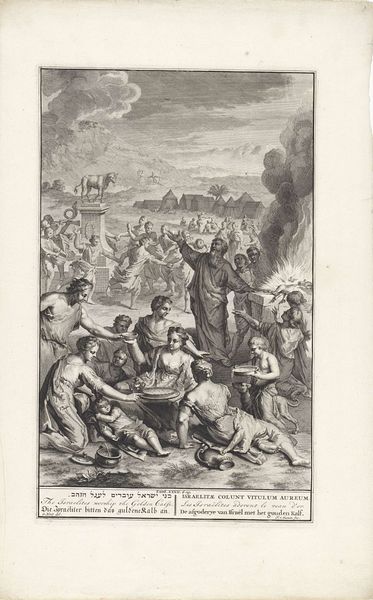
Nachtelijk tocht van Spaanse soldaten door het water naar Duiveland, 1575 1701 - 1703
0:00
0:00
coenraetdecker
Rijksmuseum
print, engraving
#
narrative-art
#
baroque
# print
#
old engraving style
#
landscape
#
figuration
#
history-painting
#
engraving
Dimensions: height 281 mm, width 351 mm
Copyright: Rijks Museum: Open Domain
Editor: This is "Nachtelijk tocht van Spaanse soldaten door het water naar Duiveland, 1575" made between 1701 and 1703 by Coenraet Decker. It's an engraving currently held at the Rijksmuseum. The figures wading through the water seem incredibly vulnerable; what can you tell us about this print? Curator: What's striking is the laborious nature depicted. Engraving itself is labor-intensive, mirroring the arduous journey of these soldiers. Think about the copper plate, the tools, the hours spent etching this scene – a process echoing the soldiers' struggle. It really makes you think about what Decker is trying to emphasize here with this level of material detail. Editor: That's a very tactile way of thinking about it! So, are you suggesting that the medium is the message here? The material speaks as much as the subject? Curator: Precisely. Consider the political climate. These prints, circulated widely, shape public perception. By meticulously depicting this grueling journey, Decker participates in the ongoing narrative and shapes opinion concerning military campaigns, which is no small task considering this requires access to very particular materials and skills. What choices in its distribution would amplify its message? Editor: So the physical dissemination is a material act as well? It's like propaganda through production and consumption of art objects. I never really considered that with prints before. Curator: Absolutely. It encourages us to see this print not just as a representation of an event, but also as a manufactured object deeply embedded in its socio-political context. Editor: This has certainly changed how I’ll be looking at prints moving forward, thank you! Curator: Likewise. Paying attention to the object’s materiality adds dimensions of meaning often overlooked.
Comments
No comments
Be the first to comment and join the conversation on the ultimate creative platform.
